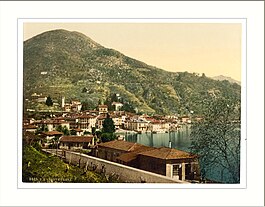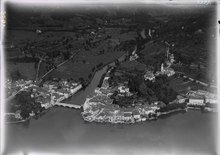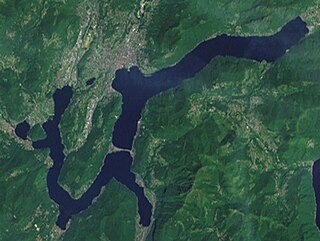
Lake Lugano is a glacial lake which is situated on the border between southern Switzerland and northern Italy. The lake, named after the city of Lugano, is situated between Lake Como and Lago Maggiore. It was cited for the first time by Gregory of Tours in 590 with the name Ceresio, a name which is said to have derived from the Latin word cerasus, meaning cherry, and refers to the abundance of cherry trees which at one time adorned the shores of the lake. The lake appears in documents in 804 under the name Laco Luanasco.

There are 106 municipalities in the canton of Ticino, Switzerland,. Municipalities (comuni) are grouped in circles (circoli) which are part of districts (distretti).

Bellinzona is a municipality, a historic Swiss town, and the capital of the canton of Ticino in Switzerland. The town is famous for its three castles that have been UNESCO World Heritage Sites since 2000.

Agno is a historic town and a municipality in the district of Lugano in the canton of Ticino in Switzerland. Due to its position on Lake Lugano it is popular with tourists, and hosts summer festivals, with two hotels and several camping grounds. It is served by the Lugano-Agno airport.

Brissago, is a municipality in the district of Locarno in the canton of Ticino in Switzerland, bordering Italy. Brissago lies on the western shore of Lake Maggiore and includes the Brissago Islands.

Ponte Tresa is a former municipality in the district of Lugano in the canton of Ticino in Switzerland. On 18 April 2021 the municipalities of Croglio, Monteggio, Ponte Tresa and Sessa merged to form Tresa.

Brusimpiano is a comune (municipality) on Lake Lugano in the Province of Varese in the Italian region Lombardy, located about 60 kilometres (37 mi) northwest of Milan and about 15 kilometres (9 mi) north of Varese, on the border with Switzerland.

Cadegliano-Viconago is a comune (municipality) in the Province of Varese in the Italian region Lombardy, located about 60 kilometres (37 mi) northwest of Milan and about 15 kilometres (9 mi) north of Varese, on the border with Switzerland. As of 31 December 2004, it had a population of 1,760 and an area of 10.2 square kilometres (3.9 sq mi).

Dumenza is a comune (municipality) in the Province of Varese in the Italian region of Lombardy, located about 70 kilometers (43 mi) northwest of Milan and about 25 kilometers (16 mi) north of Varese, on the border with Switzerland.
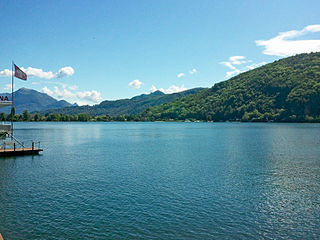
Lavena Ponte Tresa is a comune (municipality) on Lake Lugano in the Province of Varese in the Italian region Lombardy, located about 60 kilometres (37 mi) northwest of Milan and about 15 kilometres (9 mi) north of Varese, on the border with Switzerland.
The Lugano District is a district of Canton of Ticino, southern Switzerland. The capital is the city of Lugano.

Bioggio is a municipality in the district of Lugano, in the canton of Ticino in Switzerland.

Collina d'Oro is a municipality in the district of Lugano in the canton of Ticino in Switzerland. It was formed from the 2004 union of the villages of Agra, Gentilino, and Montagnola. On 1 April 2012, it incorporated the formerly independent municipality of Carabietta.
Croglio is a former municipality in the district of Lugano in the canton of Ticino in Switzerland. On 18 April 2021 the municipalities of Croglio, Monteggio, Ponte Tresa and Sessa merged to form Tresa.
Ponte Capriasca is a municipality in the district of Lugano in the canton of Ticino in Switzerland.
Monteggio is a former municipality in the district of Lugano in the canton of Ticino in Switzerland. On 18 April 2021 the municipalities of Croglio, Monteggio, Ponte Tresa and Sessa merged to form Tresa.
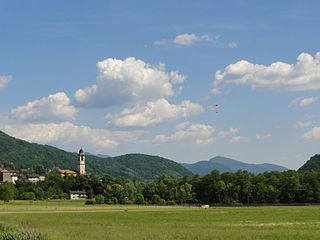
Sessa is a former municipality in the district of Lugano in the canton of Ticino in Switzerland. On 18 April 2021 the municipalities of Croglio, Monteggio, Ponte Tresa and Sessa merged to form Tresa.

The river Tresa leaves Lake Lugano at a point between Lavena Ponte Tresa in Italy and Ponte Tresa in Switzerland and flows into Lake Maggiore near Luino, a few hundred metres after joining the Margorabbia. At the outflow from Lake Lugano the river is crossed by a bridge which unites the Swiss and Italian parts of Ponte Tresa; a customs post divides them.
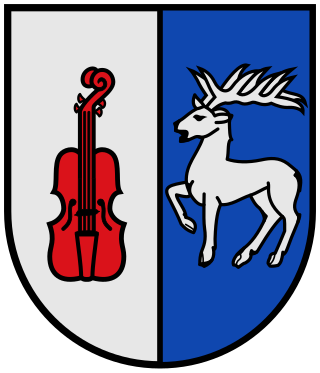
Gentilino is a village and former municipality in the canton of Ticino, Switzerland, close to Lake Lugano and the city of Lugano.

Monteceneri is a municipality in the district of Lugano in the canton of Ticino in Switzerland. It was created on 21 November 2010 through the merger of the municipalities of Medeglia, Bironico, Camignolo, Rivera and Sigirino. The first mayor elected was Emilio Filippini, who held the position until 2016.1
